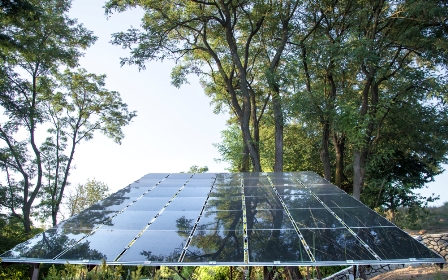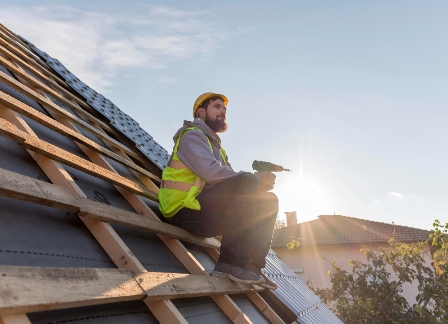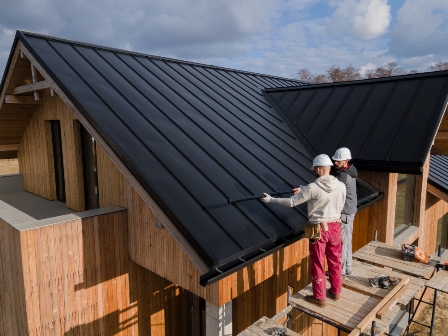In a world increasingly conscious of environmental impact, every aspect of our lives is being reevaluated for sustainability. One such area that often goes unnoticed but holds significant potential is roofing. As we explore the science of energy-efficient roofing, we discover not only a way to save on energy costs but also a means to contribute to a greener, more sustainable planet.
Understanding Energy-Efficient Roofing
Energy-efficient roofing goes beyond traditional roofing practices. It involves the use of materials and techniques designed to reduce the transfer of heat into the building, thus enhancing energy efficiency.
Benefits of Energy-Efficient Roofing
Energy-efficient roofing isn’t just a trend; it’s a smart choice with numerous advantages for both homeowners and businesses. Let’s delve into the compelling benefits of opting for energy-efficient roofing solutions:
Energy Cost Savings:
One of the primary benefits is the significant reduction in energy costs. Energy-efficient roofing materials, such as cool roofs or solar reflective roofing, help regulate indoor temperatures. This, in turn, lowers the need for excessive heating or cooling, resulting in reduced energy consumption and lower utility bills.
Environmental Impact:
Choosing energy-efficient roofing contributes to environmental conservation. By minimizing energy usage, you directly reduce your carbon footprint. This eco-friendly approach aligns with global efforts to combat climate change, making a positive impact on the planet.
Increased Home Comfort:
Energy-efficient roofing provides superior insulation, maintaining consistent indoor temperatures. This translates to enhanced comfort levels throughout the year. Say goodbye to drafts, hot spots, or chilly corners – a comfortable living or working environment is a direct result of a well-insulated roof. To learn more ways on how to improve your home’s insulation, you can ask help from insulation experts.
Extended Roof Lifespan:
Energy-efficient roofing materials often have properties that protect against wear and tear. Their ability to reflect sunlight or absorb less heat can contribute to a longer lifespan for your roof. This longevity not only saves you money on premature replacements but also reduces the environmental impact of roofing material production.
Reduced Urban Heat Islands:
Urban heat islands, characterized by elevated temperatures in urban areas, can be mitigated with energy-efficient roofing. Reflective roofing materials, like cool roofs, bounce sunlight away, preventing the excessive absorption of heat. This not only benefits individual properties but contributes to a cooler overall urban environment.
Types of Energy-Efficient Roofing Materials
Solar Reflective Roofing:
- Utilizing reflective materials to bounce sunlight away.
- Reducing heat absorption and lowering indoor temperatures.
Green Roofs:
- Incorporating vegetation on the roof surface.
- Providing natural insulation and biodiversity.
Cool Roofs:
- Using reflective materials to emit solar radiation.
- Minimizing heat absorption.
Installation and Maintenance Considerations
While the benefits are evident, the proper installation of energy-efficient roofing is crucial. Professional installation ensures optimal performance and longevity. Additionally, regular maintenance, including inspections and cleaning, is essential for preserving these roofs’ efficiency.
Financial Incentives for Energy-Efficient Roofing
Governments worldwide recognize the importance of sustainable practices. This has led to various financial incentives, such as tax credits and rebates, encouraging individuals and businesses to invest in energy-efficient roofing. While the initial cost may seem high, the long-term savings often outweigh the investment.
Challenges and Solutions
Despite the advantages, challenges like initial costs and limited awareness exist. However, innovative solutions, including financing options and increased public education, are addressing these hurdles, making energy-efficient roofing more accessible.
The Environmental Impact
Reducing our carbon footprint is a collective responsibility. Energy-efficient roofing plays a role by lowering energy consumption, thus contributing to a more sustainable future. Moreover, the mitigation of urban heat islands, achieved through reflective roofing, benefits entire communities.
Future Trends in Energy-Efficient Roofing
Looking ahead, technological advancements in roofing materials and construction techniques promise even more energy-efficient solutions. From smart roofs that adapt to weather conditions to novel materials with enhanced insulating properties, the future of green roofing is exciting.
Tips for Choosing the Right Energy-Efficient Roofing for Your Property
Tailoring energy-efficient roofing choices to specific climates is crucial. Residential and commercial properties may have different requirements, and understanding these nuances ensures the most effective and sustainable solution is implemented.
DIY Energy-Efficient Roofing Projects
For those with a hands-on approach, there are small-scale improvements that homeowners can undertake to enhance their roof’s energy efficiency. From sealing leaks to adding additional insulation, these DIY projects contribute to both energy savings and environmental consciousness.
Community and Global Initiatives for Green Roofing
Various organizations worldwide actively promote energy-efficient roofing. These initiatives aim to create awareness, provide resources, and encourage widespread adoption of sustainable roofing practices. Globally, efforts are underway to make green roofing a standard rather than an exception.
The Role of Roofing Companies in Promoting Sustainability
Roofing companies play a pivotal role in advancing sustainability. Those adopting eco-friendly practices, obtaining relevant certifications, and adhering to stringent standards contribute significantly to the overall promotion of energy-efficient roofing.
FAQs (Frequently Asked Questions)
Energy-efficient roofs can be tailored to various climates, but certain materials may be more effective in specific conditions.
Green roofs provide a habitat for plants and insects, fostering biodiversity in urban environments.
While regular maintenance is essential, energy-efficient roofs don’t necessarily demand more attention than traditional ones.
Government incentives vary by location but may include tax credits, rebates, or grants for adopting energy-efficient roofing.
In most cases, solar panels can be installed on various energy-efficient roofs, but it’s crucial to consult with a professional for the best results.
Conclusion
The science of energy-efficient roofing is not just a technical endeavor but a collective step towards a sustainable future. As we adopt greener roofing practices, we not only save on energy costs but actively contribute to environmental conservation. The choices we make today in roofing can have a lasting impact on tomorrow’s world.






